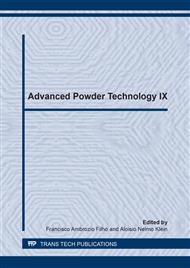p.477
p.483
p.491
p.496
p.501
p.507
p.512
p.518
p.524
Quantitative Analysis of Titanium Samples by Means of the Pore-Throat Network Code Application
Abstract:
Several studies about porous biomaterials indicate that surgical implants success is directly linked to its surface morphology and structural characteristics. Porous implants improve osseointegration at the implant-bone interface, since they induce new bone tissue formation inside the pores providing a better mechanical stability. One of the most important parameters is the size of the pores. However, if the connectivity among the pores is not large enough for good blood irrigation, the osteocytes cells cannot reach the pores, no matter its size. The aim of this work is to analyze the porous structure of titanium samples fabricated by powder metallurgy, by characterizing pores and connections separately. This kind of structure characterization is important to improve the design of porous biomaterials. To accomplish it, a numerical code which converts 3D images into a pore-throat network structure was adopted. With this code, parameters such as size, frequency and quantity of pores and their connections can be determined. To acquire the 3D images of the samples, X-ray microtomography was used. Two samples were analyzed with distinct pore morphological types. The main result showed marked differences between the structures related to the connections radius, which suggests the one with better blood permeability.
Info:
Periodical:
Pages:
501-506
Citation:
Online since:
December 2014
Keywords:
Price:
Сopyright:
© 2014 Trans Tech Publications Ltd. All Rights Reserved
Share:
Citation:


